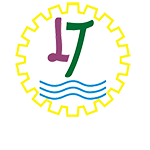Types of Flexible Manufacturing System Layouts
by:Luteng CNC Parts
2020-09-18
In 1995, Yoram Koren first proposed the concept of a reconfigurable manufacturing system.The reconfigurable manufacturing system is not to allow each type of machine to process parts continuously, but to have one line for each type of machine.After the first type of machine has finished processing the part, it is forwarded to the next available machine on the next line.CNC machines and parallel manufacturing centers that produce products.If a machine is down, the reconfigurable system is less disturbed because the parts can be easily routed to the machines around it.A refactored manufacturing system or RMS is designed to handle a variety of product combinations of different volumes.When the demand for product A is low, it is also possible to produce product B online, keeping the factory busy and revenue flowing.If a computer-aided manufacturing system tracks each part and ensures that the correct manufacturing process is run on each part and prevents missing steps, several different product streams can be run simultaneously on several Reconfigurable Manufacturing Systems.Companies implementing RMS include aerospace manufacturers, power train manufacturers, and machine tool manufacturers.Flexible manufacturing systems use a combination of machines and parts to produce a wide range of end products.A flexible manufacturing system or FMS is dependent on a CNC machine and usually works in parallel or in series.High automation and robotics bring flexibility, but this increases the capital cost of flexible systems.Flexible manufacturing systems are ideal for a wide range of small and medium batches.In theory, the scale of the flexible manufacturing system can be comparable to the throughput of the assembly line, but the initial capital cost will be high.FMS has been used in automobile manufacturers to manufacture mid-Adjust the dimensions of many parts such as filter systems and wiring assemblies, while retaining the ability to switch to different product groups when assembly lines are changed to make different vehicles.Flexible Manufacturing Systems allow companies to build related product lines using the same initial manufacturing process (such as metal casting or welding) while relying on CNC machines for final manufacturing steps.The metal blanks that go into are the same, but it is ultimately a license plate or a mobile phone, depending on the program that the CNC machine runs.Flexible Assembly systems or FAS rely less on flexible manufacturing equipment such as CNC machines, and more on advanced robot stations or trained employees.When humans do assembly work, they use workstations that can handle many different products.Whether it\'s humans or robots, they\'re supported by a part delivery system that can provide everyone with everything they need, regardless of what they\'re building.Production planning and production controlWorking products are essential to maintain the throughput and productivity of FAS systems.Just-in-If there is no delay in the part delivery and assembly shipment to the warehouse or the end customer, the time or JIT manufacturing works well with FAS.In addition to production planning systems, warehouse management systems, and parts delivery networks, flexible assembly systems may not be automated at all.Flexible Assembly systems for different areas such as personal computer customization, mobile phone renovation and assembly manufacturingto-order toy kits.Flexible assembly areas are used to add customization for mass production products.They are also used for small operations to support multiple assembly lines when the portfolio always changes.Month of rapid prototyping machine-D printers are not yet practical for very large or very complex components.They rely on 3-D model in computer-aided design software, telling it where to apply each layer of plastic or hardened gel to solid materials using a laser.The rapid prototyping machines are compared to replicators, although they cannot yet shape the metal into complex shapes, although replicas of marble statues, skulls, plastic parts and geometric designs are now often made.The rapid prototyping machine is very flexible but is mainly used for single pieces or a few prototypes.3-D printing can create complex curves and open geometry, which is very difficult and time-consuming to create through machining.The rapid forming machine is described as pre-The cursor points to the replicator.Create a design on the computer, send it to the prototype and watch it take hours to do what you ask.While rapid prototypes cannot reproduce natural materials such as wood or fashionable metals, advances in polymer technology mean they can make working parts such as valves, toys and antenna shells.
Custom message



















